Guides & Documents
Analytical Quality Control Group
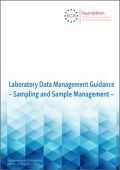
The ECA Analytical Quality Control Group (AQCG) has developed a new document: Laboratory Data Management Guidance – Sampling and Sample Management. Version 1 of the document was released on 30 April 2025. This guidance continues the sequence of previously published guidance documents.
The document underscores the critical importance of sampling as a potential error-generating process and details the requirements for establishing robust sampling protocols to minimize variability and maintain data integrity. Additionally, the guidance elaborates on the critical steps involved in the sampling process, from statistical sampling plans to sampling protocol design, and the documentation of sampling records. It also provides practical examples and illustrative figures to assist laboratories in implementing effective sampling strategies and ensuring regulatory compliance.
Like previous AQCG publications, the PDF file is available for free in the AQCG members area. For further information and to register for a free membership, please visit the group's website.
Further Analytical QC Group Guidances & SOPs
- Guide for Integrated Lifecycle Approach to Analytical Instrument Qualification and System Validation
- Laboratory Data Management Guidance - Analytical Procedure Lifecycle Management (APLM)
- ICH Q2 Guideline Comparison R1 versus R2
- ICH Q14 Guideline Comparison Step 2 2022 versus Guideline 2023
- Data Governance and Data Integrity for GMP Regulated Facilities (by ECA Analytical Quality Control Working Group & ECA Data Integrity IT Compliance Group)
- Standard Operating Procedure (SOP): Laboratory Data Management; OUT-OF-SPECIFICATIONS (OOS) RESULTS
- Laboratory Data Management Guidance: OUT OF EXPECTATION (OOE) AND OUT OF TREND (OOT) RESULTS
GMP Auditor Association
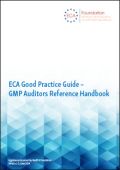
Auditing is one of the fundamental tools to assist businesses to ensure they are fulfilling their obligations to their shareholders, customers and of course the relevant regulators. It is therefore not surprising that the pharmaceutical industry has placed the auditing in the heart of its Quality Management System.
The ECA's GMP Auditor Association therefore developed an Audit Guidance Document to cover key principles of an audit, which includes practical examples and templates – now available as version 3.0, including intensive revisions and improvements as well as new chapters, for example on remote auditing, medicinal cannabis and ATMPs. An example of an audit report, which can be adapted accordingly, is certainly also very helpful. The complete document comprises the following Guide as well as the attachments:
- GMP Auditors Reference Handbook
- Attachment 1 - Audit Agenda Template
- Attachment 2 - Audit Report Template
- Attachment 1 - Audit Areas and Criteria
You will find the Guide with Attachments in the members' area of the GMP Auditor Association's website. If you are not a member yet, simply take advantage of the registration form. Membership is available at no cost.
European QP Association
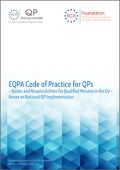
The EU Directives and the EU Guide to GMP define some detailed requirements to be met by the Qualified Person (QP). These requirements have been extracted from the relevant documents and are summarized in a Good Practice Guide developed by the European QP Association. A number of responsibilities as well as requirements for continuous training for QPs are not defined in detail in the EU Directive and Guides. This Good Practice Guide – considered a "living document" – gives recommendations to QPs. The Guide is available for download in the members' area of the EQPA website. And if you're interested in a free of charge membership, please see the membership application forms.
Questions and Answers on Annex 1

With the questions and answers we want to provide support for the implementation of Annex 1. The answers to the questions we received during past events are based on the opinions and experiences of the members of the Annex 1 Task Force, the CCS Task Force as well as on the answers of the speakers at the events.
Find out more about the Q&A document. To get your free copy of the Questions and Answers on Annex 1 please use the contact form.
ECA Equipment Design Guide
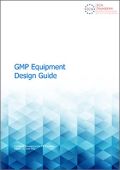
The purpose of the ECA's GMP Equipment Design Guide is to illustrate the generally applicable requirements for the design of equipment and to explain how the connection between design and the statement “produced in compliance with GMP” can be made. To this end, the guidance contains numerous references and points of contact, a sort of a road map, that offers detailed information on the requirements or ways of proceeding for individual cases.
Find out more about the document and get your free copy of the ECA GMP Equipment Design Guide.
Contamination Control Strategy Task Force
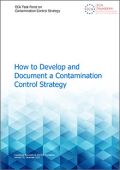
According to the latest draft of the revision of EU GMP Annex 1 an overview strategy is required for the area of contamination control that links the various aspects of contamination control and associated measures, records the interactions and facilitates a corresponding analysis for gaps in the system. This can be used in existing companies to meaningfully record, coordinate and supplement existing measures or, in newly emerging facilities, to coordinate the implementation of the necessary contamination control measures across departments.
ECA´s Task Force on Contamination Control Strategy prepared a Guideline document that supports the user in creating a CCS, building up the documentation (comparable to a Site Master File – SMF) and thereby fulfilling the requirements of EU GMP Annex 1.
Please also read the news for more detailed information on the guide and the attachment. To receive a copy of ECA´s Guideline ECA Task Force on Contamination Control Strategy - Guide How to Develop and Document a Contamination Control Strategy with the Attachment 3 comprises the "Template for the Contamination Control Strategy Document (example)" please use the contact form.
Pharmaceutical Microbiology Group
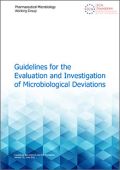
In three chapters this Group's Guidelines providees detailed information for the Evaluation and Investigation of Microbiological Deviations.
In chapter 1 you will find examples of controlled room requirements (action and alert levels) and serves as a guide for the handling of deviations occurring during microbiological environmental monitoring in facilities manufacturing non-sterile pharmaceutical products.
Chapter 2 concentrates on Lab Investigations – Endotoxin Out of Specification (OOS)/ Out of Trend (OOT)/ Atypical Results Investigations.
Out of specification, out of trend, and atypical results all necessitate investigation. The primary objective of an OOS investigation is to determine either if an assignable cause exists or that no assignable cause can be identified. An assignable cause must be a documented and scientifically sound determination that an OOS result can be traced to an error. The depth and scope of the investigation will be dependent on the type of deviation encountered.
A clear and well-defined pre-approved documented procedure should be followed for all OOS investigations. To be meaningful, the investigation should be thorough, timely, unbiased, well-documented, and scientifically sound. The investigation should start in the laboratory, moving out to include all other relevant departments if no clear and obvious lab error is identified. The initial OOS must be considered valid unless a comprehensive investigation clearly demonstrates otherwise.
In Chapter 3: Guidance for Sterility Test Failures provides a guide for the handling of activities following a sterility test failure of products that require absence of microbial growth in the sterility test.
ECA Guidelines for the Evaluation and Investigation of Microbiological Deviations
- Chapter 1 - Deviation Handling of Microbiological Environmental Monitoring Excursions in Non-Sterile Pharmaceutical Manufacturing
- Chapter 2 - Lab Investigations – Endotoxin Out of Specification (OOS)/ Out of Trend (OOT)/ Atypical Results Investigations
- Chapter 3 - Guidance for Sterility Test Failures
Validation Group

Qualification and Validation (Q&V) activities can be very time consuming, expensive and causing delay of new products to market, facility expansions etc. The purpose of the Validation Group's latest Qualification and Validation Guide is thus to streamline Q&V by enabling a better cooperation and mutual understanding between customers and suppliers on projects related to pharmaceutical manufacturing systems, including equipment, facilities and utilities.
- Good Practice Guide: Qualification and Validation Version 3.0 - A guide to effective qualification based on Customer - Supplier Partnership
The ECA was one of the first organisations which published a Good Practice Guide regarding the new FDA Process Validation Guidance. With the revision of the Annex 15 also this Good Practice Guide has to be updated. As 1st revision the guide contains on one hand the main elements of the new validation approaches ("what to do"). On the other hand, it also serves as a supporting guide for the implementation ("how to do").
- ECA Good Practice Guide on Validation
You will find both guides in the members' area of the Group's website. If you're not a member yet, you can register for a free membership.
GDP Association

It is of key importance that medicinal products are not only manufactured in a high quality in accordance with Good Manufacturing Practices, but that the quality and integrity of these products are maintained throughout the entire supply chain up to the patient. This is where Good Distribution Practice (GDP) comes into play. The GDP Interpretation Guide was published jointly by the ECA Foundation GDP Association and the Pharmaceutical Quality Group (PQG). It’s intention is to help colleagues in industry with the implementation of the EU GDP Guideline.
- ECA/PQG Guidance on the Interpretation and Implementation of European Good Distribution Practice &
- ECA/PQG Guidance on the Interpretation and Implementation of European Good Distribuition Practice for Active Substances
The Code of Practice has been developed to support Responsible Persons according to EU GDP Guide 2013/C343/01. It provides information about the responsibilities and duties of RPs as well as recommendations for education and ongoing training. Finally an example of a job description should help RPs to define their role in the supply chain of medicinal products.
- ECA Code of Practice for The Responsible Person for GDP
The two Guides are available for a fre of charge download in the GDP Association's website members' area. If you're not a member yet, just register for a free membership.
Visual Inspection Group
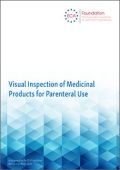
The Visual Inspection Group's Good Practice Guide on Visual Inspection of Medicinal Products for Parenteral Use was originally developed by the advisory board. Much rather than a strict requirement document, this guide is intended to be a reference for controversial issues. A regular update of the guide is intended to keep it up to date.
The latest version 4.0 comprises the following changes:
- Description of uninterrupted inspection times & breaks in manual visual inspection adapted (2.3)
- New chapter on semi-automated visual inspection (3)
- Routine Operation: usage of test sets clarified (4.2)
- Method reinspection may differ from method of original inspection (7.1)
There seems to be an increasing uncertainty in the pharmaceutical industry regarding the integrity testing of sterile containers. Companies start to invest in 100% testing systems before defining the underlying concept adequately − leading to new questions. A 100% testing does not mean a 100% safety! That's why the Board of the ECA Visual Inspection group worked on a position paper regarding Container Closure Integrity testing of medicinal products for parenteral use.
The new paper is in line with the requirements of the EU Pharmacopeia and reflects current industry practices. It shows what a CCI control strategy could look like.
You will find both the Guide and the position paper on the members' area of the Visual Inspection Group website. To get access to the members' area you can register for a free membership.
Cannabis Working Group
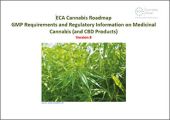
Searching for answers to GMP and other regulatory questions is a time-consuming activity. The ECA Cannabis Working Group’s Cannabis Roadmap - GMP Requirements and Regulatory Information on Medicinal Cannabis (and CBD Products) (Version 8.0) – available exclusively at the respective events – is therefore intended to provide a source of information, summarizing GMP and other regulatory information and documents currently available on a global level. In addition, it provides useful comments and an Annex with further information. It is the intention of ECA ́s Cannabis Working Group to update this comprehensive collection regularly and to add new information on regulations and guidelines once they are available.
Data Integrity & IT Compliance Group
The best-practice-paper was originally developed by the ECA Data Integrity & IT Compliance Group’s Advisory Board. Much rather than a strict requirement document, this paper is intended to be a reference for controversial issues. The documents are available for download if you register for the Group.
Data Integrity & IT Compliance Group Checklists & SOPs
- ECA Audit Checklist - PaaS Service Providers
- ECA Audit Checklist - SaaS Service Providers
- ECA SOP - Selection Process for Cloud Service Providers
- SOP - Review of Audit Trails
Data Integrity Task Force
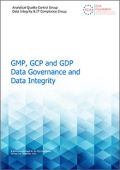
The GMP, GCP and GDP Data Governance and Data Integrity Guide was developed by the experts of the ECA Analytical Quality Control and the Data Integrity & IT Compliance Group in close collaboration. Now, version 3.0 is available for download.
In addition to highlighting the “what”, the document also comprises about 40 pages of practical examples on “how” to implement the complicated data integrity requirements. It further includes an overview of the DI guidance documents available from other organisations and health regulatory bodies.
Version 3.0, which now comprises 96 pages, covers the critical area of the pharmaceutical laboratory and provides help for the implementation of
- the control of blank forms,
- manual integration of chromatography peaks,
- hybrid systems,
- spreadsheets,
- management of contract laboratories
as well as for many other issues. Process Management and Manufacturing issues are described in a specific section with emphasis on the ISA 95 levels of MES applications, also stressing the review of audit trails in this area. The specific problems arising in GDP (Good Distribution Practice) – rarely covered in any DI guide – are highlighted as well. Finally, as regulators increasingly pay attention to the identification of CRO records in the Good Clinical Practice (GCP) section, it is also mentioned in various parts of the new version.
You can download the GMP, GCP and GDP Data Governance and Data Integrity Guide in the members' area on the ECA Academy website. To join the Academy as member, please see membership opportunities.

